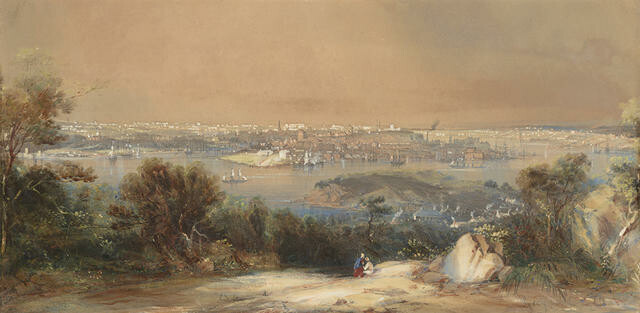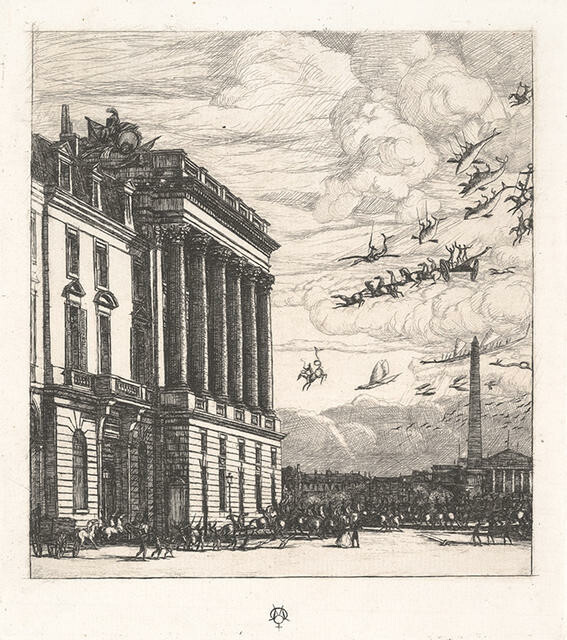John Pule
Niue /
Aotearoa New Zealand, b.1962
Niuean,
Pasifika
On Another Man’s Land
- 1997
- Oil on unstretched canvas
- Purchased 1997
- 2240 x 1820mm
- 97/26
Location: Contemporary Collections Gallery
Tags: animals, crosses (motifs), fish (animals), landscapes (representations), monochrome, Oceanic, patterns (design elements), people (agents), spears (weapons)
John Pule examines the complex experience of leaving one’s homeland and arriving in another – a reflection on his own migration from Niue to Aotearoa New Zealand. Using the grid-like composition of hiapo, he has developed a symbolic language of spears, migratory birds, sea creatures and geometric patterning that speaks to personal and shared histories of cross-cultural exchange. Here, he also reproduces an eighteenth-century drawing by Raiatean navigator Tupaia, depicting Captain Cook’s botanist Joseph Banks trading with a rakatira from Uawa. It’s an image that complicates our understanding of the dynamics involved in this encounter, and asks us to consider our own place in Aotearoa.
hiapo ~ barkcloth from Niue
rakatira ~ person of high rank, chief, leader
He Kapuka Oneone – A Handful of Soil (from August 2024)
Exhibition History
Kā Honoka, 18 December 2015 – 28 August 2016
Taking visual direction from nineteenth-century Niuean painted hiapo (tapa cloth), John Pule's 'On Another Man’s Land' lays out composite pattern and motif into complex, segmented storylines. Cryptic symbols feature alongside more recognisable imagery such as numbers, creatures and various goods, both customary and introduced. Also pictured are an explorer’s sextant, a missionary and figures embracing, gathered, or in despair.
That this is storytelling from a Polynesian viewpoint is reinforced by Pule’s incorporation of a sketch by the Raiatean priest and navigator Tupaia, made while on board Captain Cook’s Endeavour in the Pacific in 1770. Depicting a Māori chief of Uawa (Tolaga Bay) trading with the naturalist Joseph Banks, it foretells future, often ruinous, moments of exchange.
The painting’s title refers to the Niue-born Pule's own experience of being raised in Auckland, while conceivably raising broader questions. Pule has recently returned to live in Niue.
History, places and stories unfold in this work. The European missionary colonisation of the Pacific and the journey undertaken by many Pacific Islanders to the shores of New Zealand are related through geometric symbols and figurative elements. Migratory symbols include the frigate birds that accompanied, and were seen as guides for, Polynesian travellers.
Mirroring his personal history, John Pule combines elements of both cultures. The lines and patterns of On Another Man's Land are those of Niuean hiapo (tapa cloth), but the materials are those of European art. Ultimately, however, the work is distinctly Polynesian in style.
Pule was born in Niue, but his family came to New Zealand in 1964. He studied art briefly in Auckland but did not begin painting full-time until 1987. He has exhibited extensively throughout New Zealand and the Pacific. Pule describes Niue as his spiritual home. He is also an accomplished writer and has published two novels and several volumes of poetry. (Label date unknown)
Based loosely on the Niuean haipo (bark cloth), this works reflects the artist's Polynesian background. The title reflects the sense of dislocation and alienation he has experienced as a Polynesian artist living in New Zealand. Resembling maps of food trails, tracks to fishing grounds, burial places, plantations and landfall sites, the patterns and motifs also integrate Pule's personal symbolism with genealogy and stories. The birds he has depicted represent wealth and physical well-being, while the lizards refer to love, life and death. These animals, together with mythological creatures, scenes and references to his own poetry, create an allegory for the elemental forces of life and change within the Pacific. (Label date unknown)

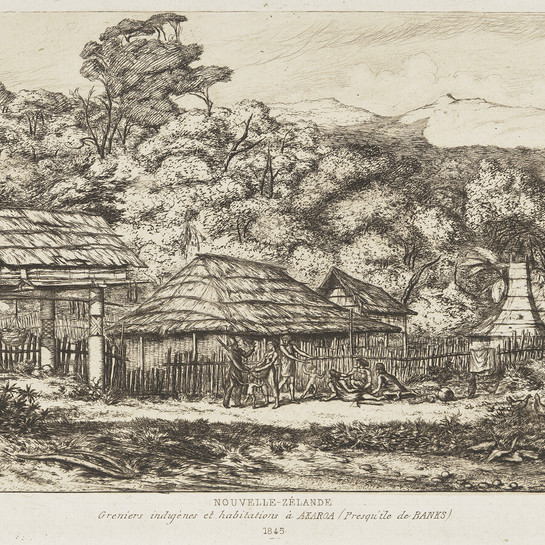
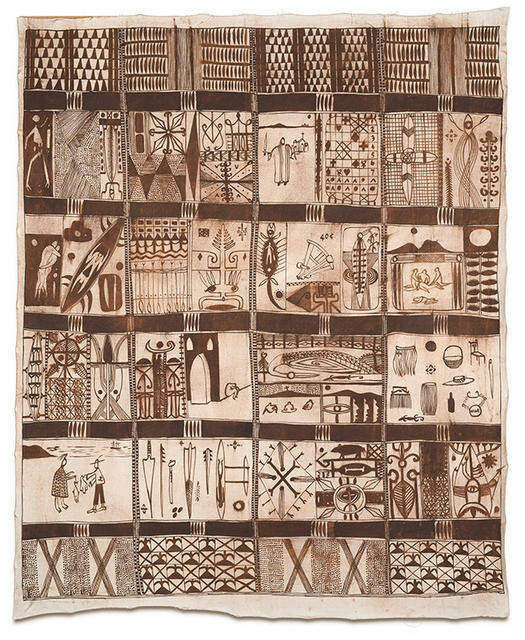
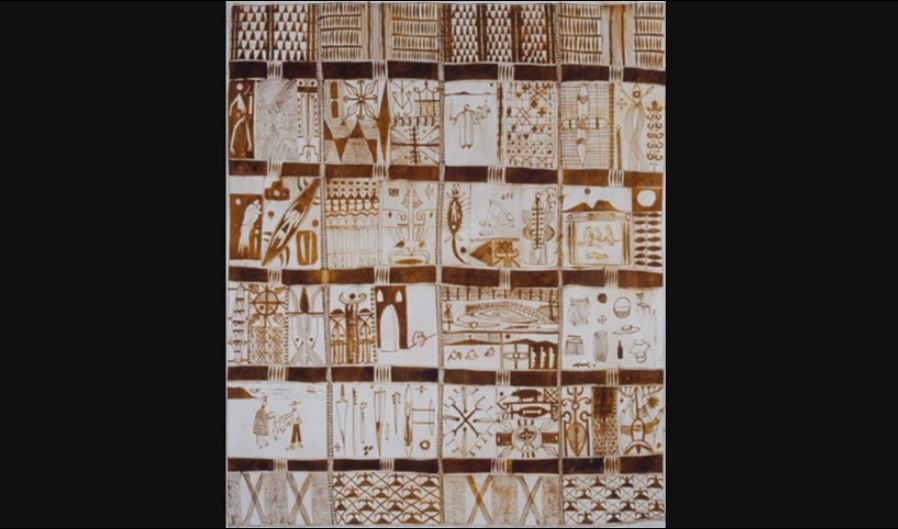
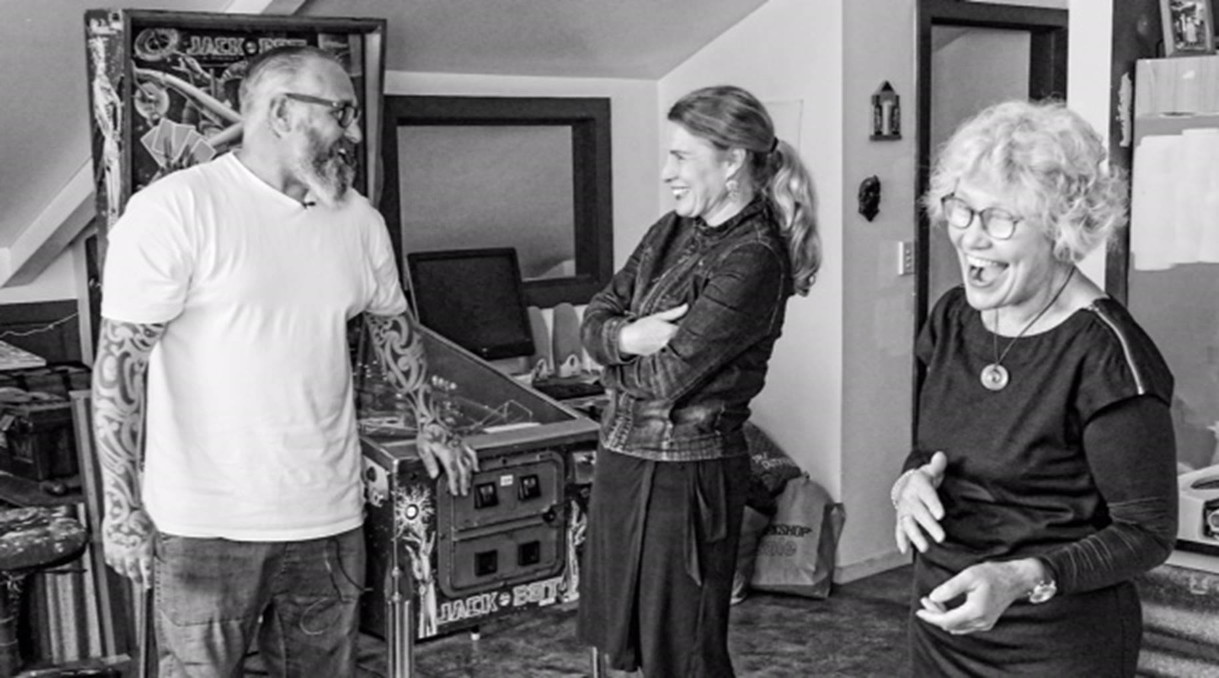

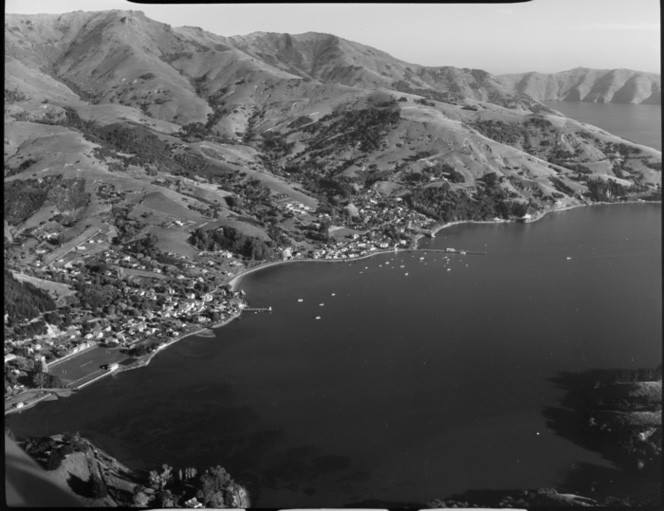

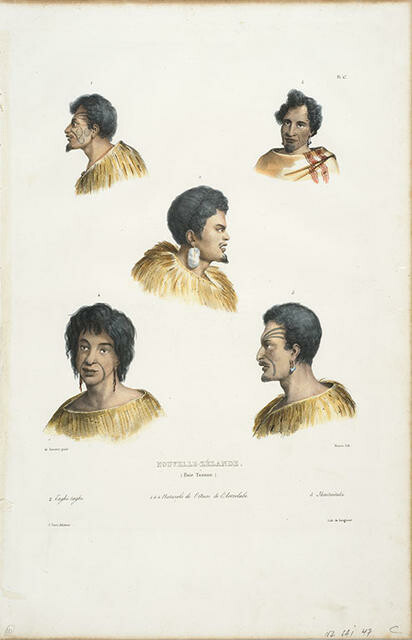
![Nouvelle-Zélande - coffre en bois sculpté [Plate 59]](/media/cache/74/c2/74c2c0a963376af9e77d5765ca8842be.jpg)

